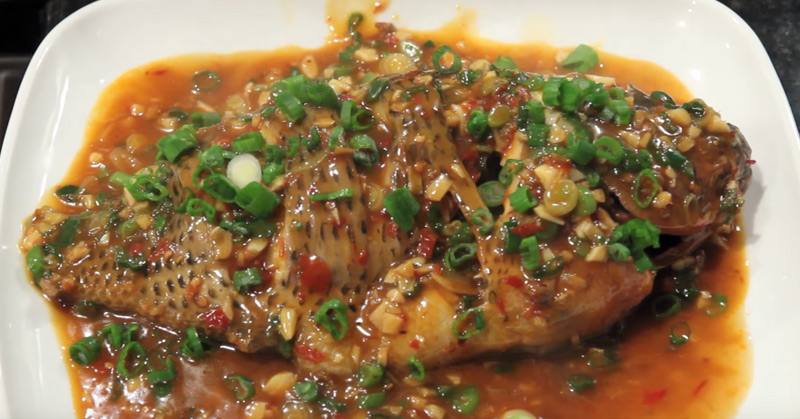


Chogochujang is a variant of gochujang made by adding vinegar and other seasonings, such as sugar and sesame seeds. Gochujang is also used as a base for making other condiments, such as chogochujang ( 초고추장) and ssamjang ( 쌈장). It is still used extensively in Korean cooking to flavor stews ( jjigae), such as in gochujang jjigae to marinate meat, such as in gochujang bulgogi and as a condiment for naengmyeon and bibimbap. Now, most Koreans purchase gochujang at grocery stores or markets. The making of gochujang at home began tapering off when commercial production came into the mass market in the early 1970s. The finished product is a dark, reddish paste with a rich, piquant flavor. A small amount of sweetener, such as sugar, syrup, or honey, is also sometimes added. Less common additions include whole wheat kernels, jujubes, pumpkin, and sweet potato. Other recipes use glutinous rice ( 찹쌀 chapssal), normal short-grain rice ( 맵쌀 mepssal), or barley. Korean chili peppers, of the species Capsicum annuum, are spicy yet sweet making them ideal for gochujang production. Gochujang's primary ingredients are red chili powder ( 고추가루 gochugaru), glutinous rice powder, powdered fermented soybeans, and salt. Traditional jars used for fermenting gochujang The gochujang recipe in Gyuhap chongseo, an 1809 cookbook, uses powdered meju made from 18 L (19 US qt) of soybeans and 3.6 L ( 3 + 3⁄ 4 US qt) of glutinous rice, then adding 900–1,260 mL ( 30 + 1⁄ 2– 42 + 1⁄ 2 US fl oz) of chili powder and bap made from 3.6 L (3.8 US qt) of glutinous rice. Gochujang ingredients reported in Jeungbo sallim gyeongje were 18 litres (19 US quarts) of powdered and sieved meju (fermented soybeans), 540 mL ( 18 + 1⁄ 2 US fl oz) of chili powder, and 1.8 L ( 1 + 7⁄ 8 U.S. qt) of glutinous rice flour, as well as soup soy sauce for adjusting the consistency. China and Japan, the countries with which Korea has historically shared the most culture and trade, do not include gochujang in their traditional cuisines. It is also mentioned that Sunchang County was renowned for its gochujang production. In the 18th-century books, Somun saseol ( 소문사설 謏聞事說) and Revised and Augmented Farm Management, gochujang is written as gochojang, using hanja characters 苦椒醬 and 古椒醬.

1700, discussed the cultivation methods of chili peppers. The first mention of chili pepper in Korea is found in Collected Essays of Jibong, an encyclopedia published in 1614. Ĭhili peppers, which originated in the Americas, were introduced to East Asia by Portuguese traders in the early 16th century. Pepper paste is again mentioned in a 1445 medical encyclopedia named Compendia of Medical Prescriptions. The second-oldest documentation of pepper paste is found in the 1433 Korean book Collected Prescriptions of Native Korean Medicines. Shiyi xinjian ( 食醫心鑑), a mid-9th century Chinese document, recorded the Korean pepper paste as 侯椒醬 ( lit.

It has commonly been assumed that spicy jang ( 장 侯椒醬) varieties were made using black peppers and chopi before the introduction of chili peppers. The Sunchang Gochujang Festival is held annually in Gochujang Village in Sunchang County, North Jeolla Province, South Korea. Traditionally, it has been naturally fermented over years in jangdok (earthenware) on an elevated stone platform, called jangdokdae, in the backyard. The sweetness comes from the starch of cooked glutinous rice, cultured with saccharifying enzymes during the fermentation process. It is made from gochu-garu (chili powder), glutinous rice, meju (fermented soybean) powder, yeotgireum ( barley malt powder), and salt. Gochujang ( / ˈ k ɔː tʃ uː dʒ æ ŋ/) or red chili paste is a savory, sweet, and spicy fermented condiment popular in Korean cooking.


 0 kommentar(er)
0 kommentar(er)
